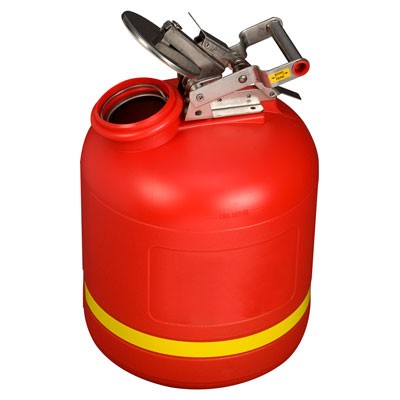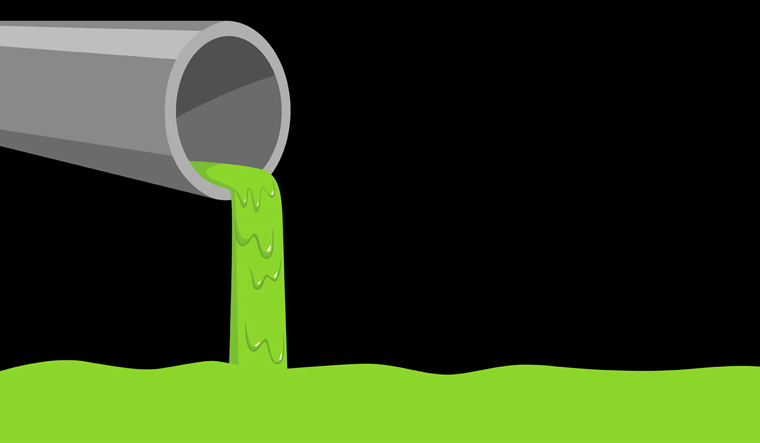Recognizing the Comprehensive Refine of Fluid Garbage Disposal: Ideal Practices and Environmental Effect Factors To Consider
The management of fluid waste disposal is a diverse concern that needs a thorough understanding of numerous best techniques and their connected ecological effects. From the kinds of liquid waste created to the methods used for collection, treatment, and last disposal, each action plays an essential function in securing environments and public health.
Sorts Of Liquid Waste
Comprehending the numerous types of fluid waste is essential for efficient monitoring and disposal practices. Fluid waste can be generally categorized into a number of kinds, each requiring distinct handling and therapy strategies.
Industrial liquid waste typically has dangerous products, consisting of heavy metals, solvents, and chemicals, created during manufacturing processes. These wastes demand strict governing compliance to secure human wellness and the environment. Residential fluid waste largely describes wastewater created from households, including sewage and greywater, which, although less harmful, can still present substantial threats if poorly taken care of.
Agricultural fluid waste, consisting of drainage from ranches, frequently consists of plant foods and pesticides that can cause ecological deterioration if not treated properly. Medical liquid waste, generated from healthcare facilities, includes infected liquids such as physical fluids and chemicals, requiring specialized disposal methods to avoid infection and environmental contamination.
Lastly, oil and oil waste, typically produced by dining establishments and auto sectors, can trigger serious obstructions in drain systems if not taken care of effectively. Recognizing these categories facilitates targeted techniques for therapy, compliance with policies, and efficient disposal approaches, inevitably promoting ecological sustainability and public health safety and security.

Collection Approaches
Reliable collection techniques are essential for the correct monitoring of fluid waste, making sure that it is gathered safely and efficiently prior to treatment or disposal. Numerous methods are used depending on the sort of liquid waste produced, the quantity, and the particular attributes of the waste.
One typical method is using dedicated collection storage tanks or sumps, which are made to capture liquid waste at the source. These systems often integrate pumps that promote the transfer of waste to bigger storage containers or treatment facilities. Furthermore, mobile collection units furnished with vacuum cleaner innovation are used in scenarios where waste is created periodically or in hard-to-reach places.
For commercial settings, closed-loop systems can effectively reduce leakages and spills, enabling the healing and reuse of fluid waste. It is likewise vital to educate employees on correct collection methods to mitigate threats connected with dangerous substances.
In addition, implementing routine upkeep timetables for collection equipment guarantees optimal efficiency and safety and security. The assimilation of innovative surveillance systems can enhance collection effectiveness by offering real-time data on waste degrees and possible dangers. In general, efficient collection methods are foundational to lasting liquid waste management methods.
Therapy Processes
Therapy procedures play a crucial role in the monitoring of liquid waste, transforming possibly hazardous materials right into multiple-use sources or secure effluents - liquid waste disposal. These processes can be extensively classified into physical, chemical, and biological techniques, each tailored to deal with particular impurities present in the waste stream
Physical treatment methods, such as sedimentation and filtration, work by eliminating put on hold solids and particle matter. These techniques are often the primary step in the other treatment chain, efficiently decreasing the lots on succeeding procedures. Chemical therapies entail making use of reagents to neutralize hazardous substances, speed up hefty metals, or oxidize natural pollutants, thus boosting the security of the effluent.
Organic therapy processes, consisting of turned on sludge systems and anaerobic food digestion, take advantage of the natural abilities of microorganisms to break down raw material. These techniques are especially effective for wastewater consisting of biodegradable toxins. Advanced treatment innovations, such as membrane filtering and advanced oxidation processes, are progressively utilized to achieve higher levels of purification.
Integrating a mix of these therapy techniques not just guarantees conformity with regulatory criteria however also advertises ecological sustainability by recovering valuable resources from liquid waste.
Disposal Options
Exactly how can organizations make sure the secure and accountable disposal of fluid waste? Efficient disposal choices are critical for safeguarding public wellness and the setting. The key approaches consist of land incineration, disposal, and treatment followed by discharge into municipal wastewater systems.
Land disposal includes the careful control of fluid waste in designated land fills, guaranteeing that it does not seep right into surrounding dirt or water. Incineration, on the other hand, subjects fluid waste to heats, converting it right into ash and gases, which call for appropriate filtration to minimize discharges. This technique appropriates for contaminateds materials that can not be treated through traditional methods.
In instances where fluid waste can be treated, organizations might decide for organic or chemical treatment procedures to counteract harmful parts prior to discharging the dealt with effluent right into visit community systems. This route typically aligns with regulative demands, guaranteeing that the effluent meets safety criteria.
Eventually, organizations have to carry out extensive assessments of each disposal alternative to identify its viability, taking into consideration aspects such as waste composition, governing compliance, and possible dangers to health and the atmosphere. By selecting proper disposal methods, organizations can add to a responsible waste administration strategy.
Environmental Effect
The environmental effect of fluid waste disposal is a vital consideration for companies seeking to decrease their ecological impact. Improper disposal techniques can bring about considerable contamination of water resources, dirt deterioration, and damaging effects on regional ecosystems. As an example, unsafe liquids can seep right into groundwater, posing dangers to alcohol consumption water products and aquatic life. Furthermore, the discharge of unattended or inadequately treated waste right into surface area waters can cause eutrophication, leading to oxygen exhaustion and the succeeding fatality of fish and various other microorganisms.

To alleviate these effects, organizations should embrace best practices such as implementing strenuous waste therapy procedures, promoting recycling and reuse, and adhering to governing requirements. By taking a positive method to fluid waste monitoring, entities can substantially minimize their environmental impact while sustaining sustainable development objectives. Eventually, a comprehensive understanding of the ecological effects associated with fluid garbage disposal is important for informed decision-making and liable stewardship of natural sources.
Final Thought
Effective monitoring of liquid waste is essential for guarding environmental stability and public health. By taking on best methods in collection, disposal, and therapy, alongside adherence to governing standards, the possibility for hazardous contamination of ecosystems can be substantially decreased. Continual advancements in modern technology and processes add to lasting waste management initiatives. Ultimately, a detailed understanding of fluid waste disposal not just mitigates environmental influences but likewise cultivates a commitment to liable resource monitoring and environmental stewardship.
The monitoring of fluid waste disposal is a complex issue that requires a complete understanding of numerous ideal practices and their associated environmental impacts. From the types of liquid waste generated to the techniques utilized for collection, treatment, and final disposal, each step plays an important duty in guarding ecological communities and public health.The environmental influence of fluid waste disposal is a critical factor to consider for companies looking for to lessen their eco-friendly impact. Inevitably, a thorough understanding of the ecological effects connected with liquid waste disposal is important for informed decision-making and responsible stewardship of all-natural sources.
Eventually, a detailed understanding of liquid waste disposal not only mitigates ecological effects informative post however also fosters a commitment to liable source administration and environmental stewardship.